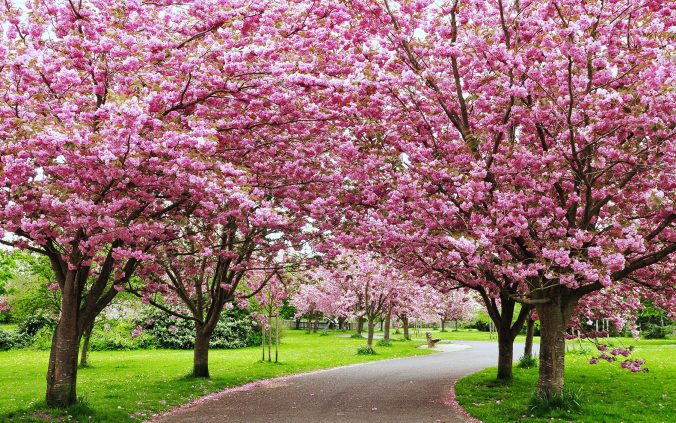Japan is particularly famous for its cherry blossom due its large number of varieties and the nationwide celebrations during the blooming season.
A cherry blossom is the flower from a Prunus tree, of which there are many different kinds. Cherry blossoms are found throughout the world being especially common in regions in the Northern Hemisphere with temperate climates, including Japan, China, and Korea, as well as Nepal, India, Pakistan, Iran, and Afghanistan, and several areas across northern Europe.
Japan is particularly famous for its cherry flowers due its large number of varieties and the nationwide celebrations during the blooming season. Different varieties of cherry blossoms bloom at different times, but most hit their peak in Tokyo at the end of March to the beginning of April. Cherry blossom festivals are held in many parks and castle grounds across Japan, but their beauty is also celebrated in countries worldwide. Appearing in everything from traditional art and paintings to making a popular choice for wallpapers and even tattoos, these delicate, transient flowers have captured people’s hearts and imagination over the centuries.
There is no tree more significant to the Japanese then the ornamental cherry, or Sakura. The most popular is a five-petal Yoshino cherry. A compact deciduous tree, it bears blossom that is almost pure white, blushed with the palest pink near the stem. Flowers appear in spring before any leaves, so trees in full bloom are dazzling.
The transience of cherry blossom’s exquisite splendour, which lasts for less than a week, heightens the appreciation of its beauty and resonates with the Buddhist ideal of thriving in the present moment.
The delightful pursuit of viewing and picnicking under cherry blossom is called banami and go back more than 1000 years. Originally an aristocratic diversion, banami parties took off in the seventeenth century, and nowadays virtually everyone in Japan takes part.
At Tokyo’s Imperial Palace, for just a few days towards the end of March, the vast moat is dotted with couples and rowing boats leaving dark trails through the white scattering of floating blossom. At banami time city parks are bursting with families, while all school children and office workers expect, and are expected, to participate in mass social bonding. Daily media reports on the Sakura zensen (cherry blossom front) as it travels up the country are closely followed.
Cherry trees are everywhere in Japan: outside most schools and public buildings, at temples and along riverbanks. They are planted not just for the splendour of the blossom, but also for the cultural, religious and even political importance, depicted on kimonos and stationery, on crockery, postage stamps, coins and even on people.
Kamikaze plane and pilot … compared to Sakura blossoms – born to live brilliantly and die young.
The Yoshino cherry is so intertwined with Japanese identity that it has been used as a potent rallying call for Japanese nationalism. The first kamikaze unit had a sub-unit call Tamazakura, ‘wild cherry blossom’. Warriors were compared to Sakura blossoms – born to live brilliantly and die young.
